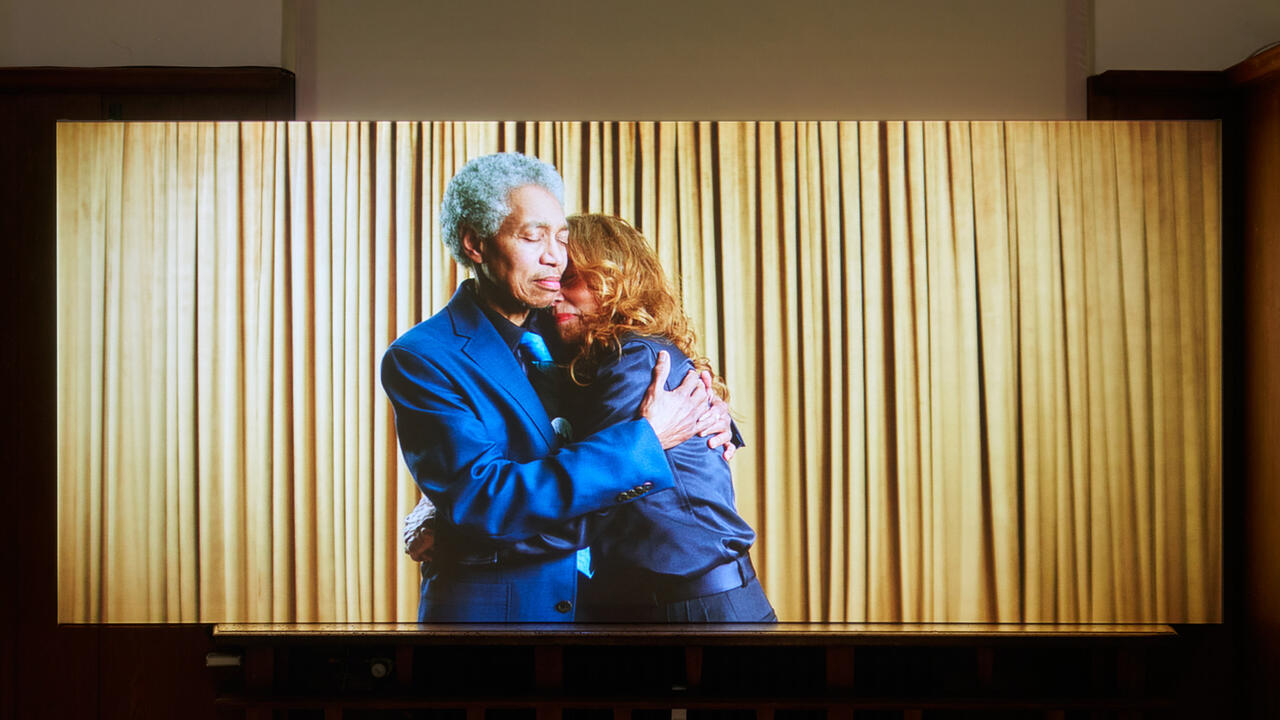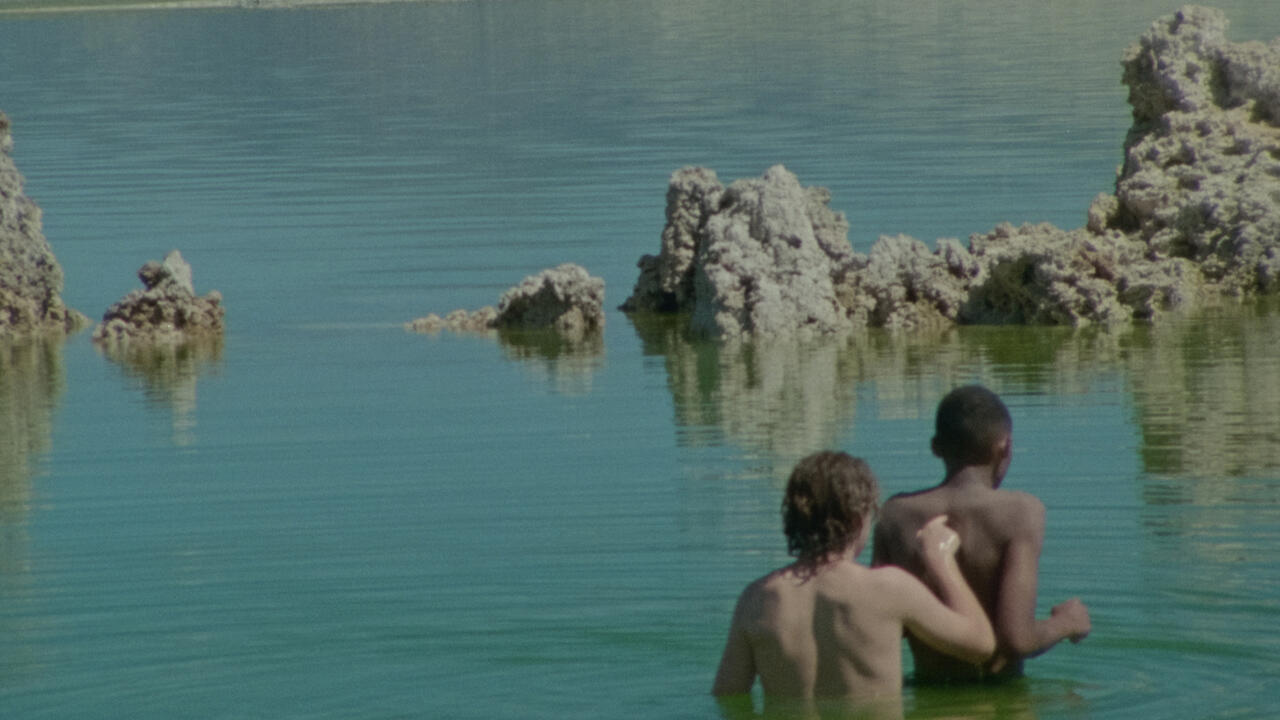Biennale of Moving Images
Centre d'Art Contemporain, Geneva
Centre d'Art Contemporain, Geneva

A ‘moving image’ is a manifold thing these days: the flicker of a virtual-reality headset; the bodycam recordings made on a police officer’s uniform; an animated icon sent as a text message. To consider the moving image as an artistic category differs from a consideration of sculpture or painting, since it means taking into account a plurality of everyday contexts and forms. But it means accounting, too, for video as a political tool: a handy, accessible, democratic (or anti-democratic) medium of forensics and surveillance, reportage and testament – and, increasingly, an inexpensive form now making filmmakers of amateur-experts across the world.
It is in this broad and global sense that the Biennale of Moving Images excelled. For its second inception after its re-instatement – founded in 1985, the event paused in 2007 and was re-initiated in 2010 – and hosted by the Centre d’Art Contemporain de Genève (CAC), the biennale presented commissioned works by 26 artists working across documentary, video installation, 3D video and experimental film, as well as between art and the film circuit. Divided between auditorium screenings and installations, the 27 films took us to places such as La Rinconada y Cerro Lunar in the Peruvian Andes, a Nigerian palm-oil plantation, the rural American south and a desert in Qatar. While some of the artists – such as Trisha Baga, Cally Spooner and Wu Tsang – are better known than others, the best works focused on the experience of people in places I’d never been able to visualize. If this sounds suspect or exoticizing, consider the degree to which our experience of ‘art’ is mediated and weighted by a shockingly small number of global capitals. If video has a democratic potential, it’s perhaps in the way it can correct the repetitive, centrifugal aggregation of art towards the expected places, themes and even imagery.

At CAC, the exhibition opened with Sophia Al-Maria’s video The Limerent Object (2016), a disjointed experiment with a primitivist visual language that felt equally inspired by the strobes of club culture and early human artefacts such as the Venus of Willendorf. Also abstract, but far less inscrutable, was Emily Wardill’s excellent motion study I gave my love a cherry that had no stone (2016): a jittery tracking shot of a man in the Calouste Gulbenkian foundation in Lisbon. Inspired by Dorothea Tanning’s painting Some Roses and their Phantoms (1952), Wardill’s film felt like a sketch or study of perspective amid new technologies of video. I was curious to see more.
With unflinching candour, several works focused on contemporary labour conditions: Salomé Lamas’s The Burial of the Dead (2016) is a devastating study of mining in La Rinconada y Cerro Lunar, the highest permanent settlement in the world, deep in the Peruvian Andes, where a large gold mine attracts many to work in perilous conditions. ‘Work will kill us,’ remarks a woman in the film. ‘We will die anyway,’ responds another. Captured in Lamas’s slow, richly coloured HD footage, they smile and smoke cigarettes at night. Karimah Ashadu’s Red Gold (2016) is a two-channel film about the production of palm oil under near-feudal conditions in Nigeria: in one scene, a woman washing palm kernels is submerged in a reddish-gold puddle. Bodil Furu’s Mangeurs de Cuivre (Copper Eaters, 2016) likewise looks to mining in the Democratic Republic of Congo. While such documentary works are long, heavy and filled with dismaying realities, they resist moralizing or signalling the superiority of their subjects: trying to make a living, they appear cognisant of their complicity with the systems that exploit them.

A number of videos, such as Wu Tsang and Boychild’s Duilian (2016), deal with transgendered and identity-based issues and the problems of their political representation. The ‘silence’ in Pauline Boudry and Renate Lorenz’s film Silent (2016) apparently refers to John Cage, but fits more proximately to the political silencing of ‘difference’. In the film installation the transgender performer Aérea Negrot (of the band Hercules and Love Affair) is seen singing on Berlin’s Oranienplatz, in the city’s historically left-leaning Kreuzberg neighbourhood. I found Boudry and Lorenz’s alignment of topics too rote and predictable but when Negrot sang ‘Dear President, Your Profile is Vague … Your enemy is your lover ... Are you optimistic when our country is at war?’ it felt like a timely response to a new US president and, with him, an increase in violence against difference. Male bonding is the subject of Yuri Ancarani’s film The Challenge (2016), an exquisitely shot feature film about falconry in oil-drenched Qatar: men are filmed relaxing in luxurious interiors, driving cars in the desert or pursuing the pointless goal of hunting pigeons using outrageously priced falcons.
By far the most unusual, and compelling, inclusion was Serbian journalist and filmmaker Boris Mitic’s Once Upon a Nothing (work-in-progress), a film crowd-sourced from more than 100 contributors, ranging from amateurs to better known filmmakers, such as Jørgen Leth. Each was asked to provide short clips that represented ‘nothing’, which Boris weaved into what will ultimately become 90-minute film. ‘Nothing’, the cheeky faux-philosophical ‘protagonist’ of the film, is really a decoy: a platform to commission content without ‘content’. In the film, we are fed the kind of boiler-plate imagery that is almost everywhere today – in ads, icons, screen-savers and phones – some of it beautiful but most perfectly meaningless: the sad, sublime banality of the digital. Remarkably, the film, narrated by Iggy Pop, is anything but boring: Pop recites Mitic’s philosophical platitudes in jingoistic rhymes recalling advertising slogans, Silicon Valley self-help philosophy or puerile rants on Reddit: ‘If pictures create memories, What does a surplus of pictures create? / The future of shopping will not be to buy, but to eliminate.’

A few years ago, a number of artists such as Oliver Laric and Helen Marten – updating, in a way, the appropriation tactics of the Pictures Generation – began using commercial stock photography in works where the conspicuous fakery of the image jarred against its intention for general use. Whereas stock photography sought a degree of universality that would allow its commercial application across a great number of contexts, Mitic’s film footage is grittier, stranger, more conspicuously ‘placed’. It shows the non-sites depicted in memes or Instagram humour: the kind of imagery that many of us encounter online, while in bed or in transit, and never really talk or think much about. It’s a dark, morose take on what it means to ‘participate’ today, when participation looks closer to extraction (of time, energy) – or, if you will, to a kind of mining. Dislodged of reference to any real-life ‘experience’, the video clips are a remarkable compilation of the low-brow aesthetic that we find in memes, in comment streams, or even – sadly – in politics. It’s a perfect mix of surface and depth that reflects something about the way we live, reading real news amid fake news, ‘liking’ photos and sharing updates: a bland addiction to half-disengagement from which we can’t fully divorce ourselves. In one segment of the film, the voice-over asserts: ‘There has never been a less exciting time to be behind a camera.’ But, having just seen a number of works of undeniable relevancy and commitment, by a number of young filmmakers stemming from places far and wide, I can – with Mitic – only emphatically disagree.
Main image: Yuri Ancarani, The Challenge, 2016, film still. Courtesy: the artist






















